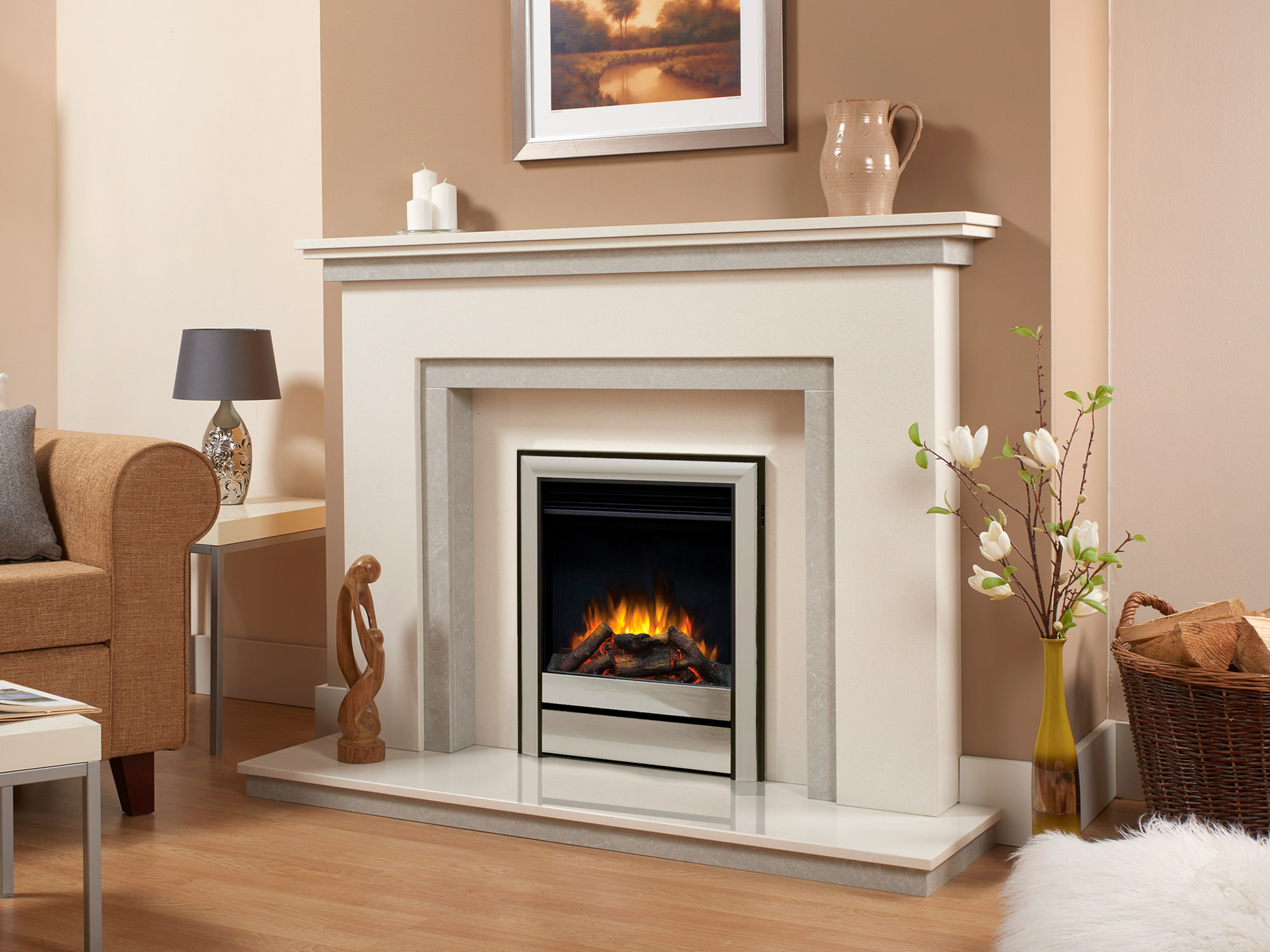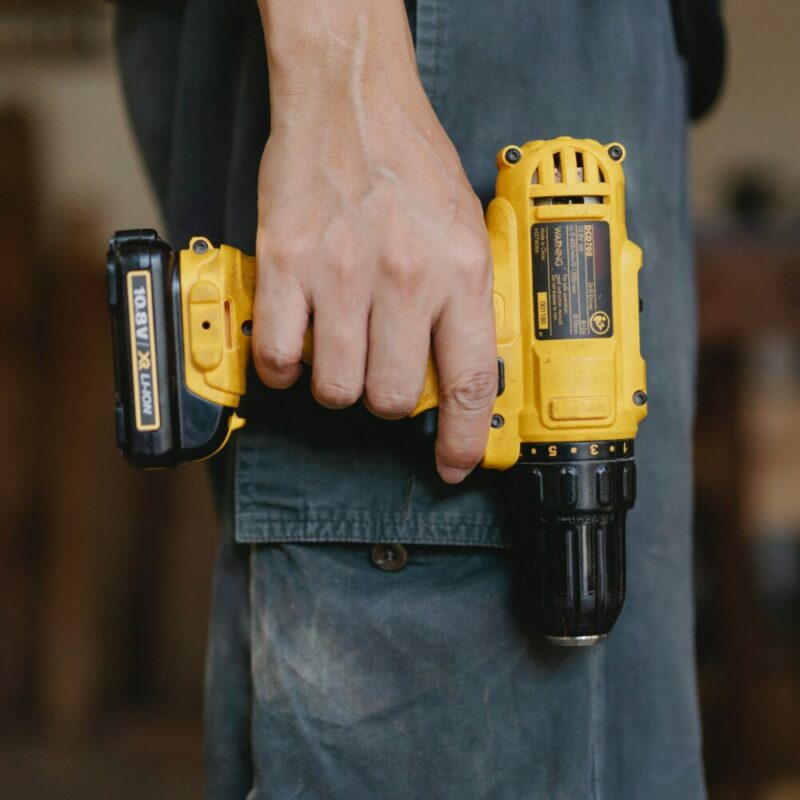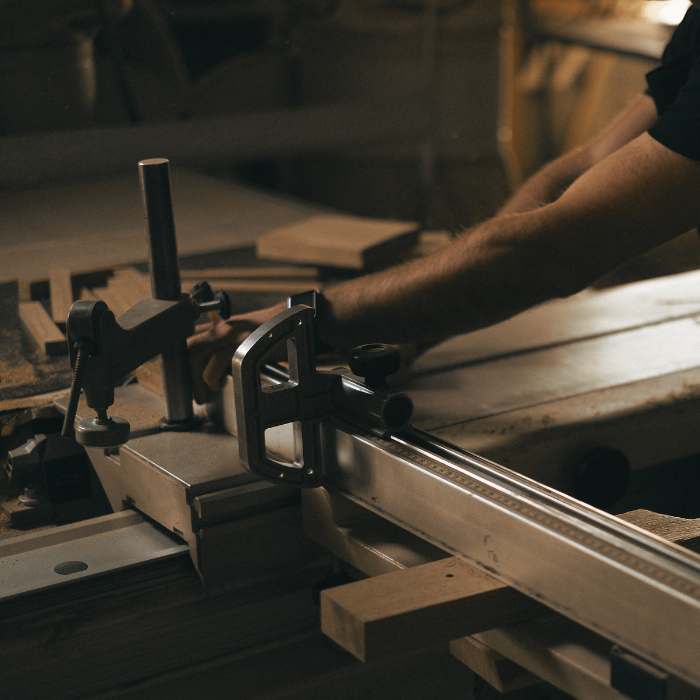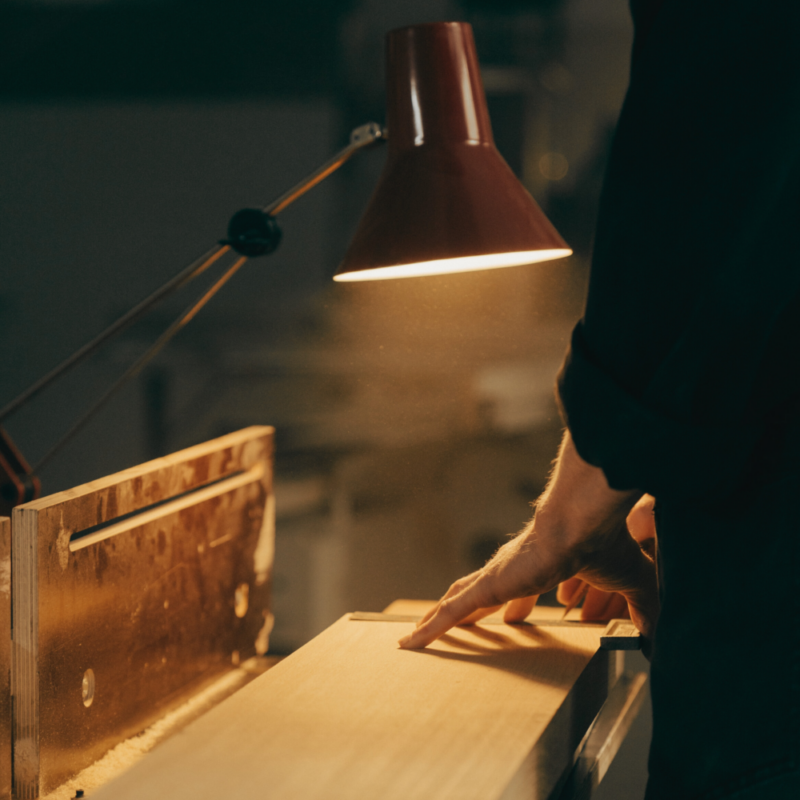Media walls have become a staple in modern interior design. But as we stand at the crossroads of evolving design trends, the question arises: Are media walls a fading trend or here to stay?
This comprehensive analysis delves into the future of the media walls fashion, exploring industry insights, expert opinions, and emerging trends that could shape their destiny.
The Rise of Media Walls Fashion: A Historical View
The concept of media walls, also known as media units or entertainment centres, has its roots in the mid-20th century. As televisions became a more important item in the home, the need for a dedicated space to house these devices arose, leading to the creation of TV stands and cabinets, the true precursors to the modern media wall. In the 1980s and 1990s, as home electronics developed to include items like VCRs, game consoles, and stereo systems, these stands evolved into larger entertainment centres. These units were utilised to accommodate a variety of devices, along with storage for items like tapes, CDs and eventually DVDs.
The turn of the new millennium brought flat-screen TVs and a shift towards minimal interior design, leading to the development of the modern media wall. This sleek and contemporary solution could house a flat-screen TV, soundbar, and other media devices while providing storage and display space. Advancements in technology and changes in consumer behaviour also fuelled the rise of media walls. As the surge in streaming services outweighed physical media, the need for storage space declined, and the focus shifted to creating a visually appealing solution that could blend seamlessly with the rest of the contemporary interior design.
Today, the media walls fashion is still booming and they are a familiar feature in many homes, providing a central hub for entertainment and technology. However, as design trends and technology evolve, the future of the media walls fashion is a topic of ongoing discussion, which we will explore further in this article.
Unlock the Advantages
Let’s delve into the reasons pushing the media walls fashion polularity:
- Aesthetics: Media walls are sleek and modern, adding a touch of elegance to any space. They are typically customisable to match the décor and style of the home, making them a versatile design element.
- Functionality: The current media walls fashion is not all about looks; they are incredibly functional. They provide a central location for all entertainment devices, including the television, soundbar, game consoles, and more, helping to reduce clutter and keep the room organised.
- Storage: Media walls often utilise built-in storage options, including shelves for displaying décor and space behind the television to hide cables and other accessories effectively. This combination of display and storage options makes media walls a functional choice for many homeowners.
- Customisation: One of the main draws of media walls is their customisation ability. They can be designed to fit any large or small space and are tailored to the homeowner’s needs. This level of customisation is appealing to many people, as it allows them to create a fireplace media wall that is uniquely theirs.
- Integration: Media walls, by nature, integrate seamlessly with the rest of the room. They are built into the wall or can be designed as a standalone piece that complements the rest of the furniture. This integration helps to create a cohesive look and feel in the room.
The popularity of media walls can be attributed to their blend of aesthetics, functionality, storage, customisation, and integration. As we continue to explore the future of media walls, these factors will play a crucial role in determining their ongoing relevance and appeal.
The Role of Media Walls in Modern Interior Design
Media walls have emerged as an essential component of modern interior design. They serve dual purposes, functionality and aesthetics and have become the main centrepiece in many homes.
As a functional element, media walls house various media equipment, from televisions and sound systems to gaming consoles and smart home devices. This centralisation of technology helps to reduce clutter, streamline the use of devices, and enhance the overall organisation of the space, which is critical in smaller, modern homes.
In addition to their functional role, media walls also serve as a significant aesthetic element. They often become the room’s focal point, drawing the eye and setting the tone for the rest of the space. The design of a media wall can influence the room’s ambience, whether it’s minimalist and modern, rustic and traditional, or somewhere in between.
In conclusion, media walls play a crucial role in modern interior design. They serve as both an epicentre for technology and a critical aesthetic element, shaping the look and feel of the entire home. We offer options to suit any interior with flexibility and customisation options, explore our wide range of fully installed media walls to find the perfect fit for your home.
Opinions: The Future of Media Walls
Let’s delve into the future of the media walls fashion; the future of media walls is a topic of ongoing debate among industry professionals, interior designers, and homeowners alike. As technology evolves rapidly, so does how we design and use our living spaces.
One key trend is the increasing integration of smart home technology. Media walls should evolve to accommodate these technologies as more homes become equipped with smart devices, from voice assistants to smart lighting and security systems. We may see media walls designed with built-in smart features, such as voice-controlled lighting or automated storage solutions.
Another trend is the shift towards minimalism and sustainability in interior design. This may influence homeowners’ decisions about electric appliances, further strengthening the media wall market, which often focuses on eco-friendly materials, energy-efficient lighting, and designs that reduce waste and promote longevity.
However, media walls may become less relevant as technology continues to evolve. With the rise of virtual reality, augmented reality, and other immersive technologies, we may see living spaces designed to accommodate these new forms of media, making the traditional TV-centric media wall a thing of the past.
In conclusion, while the long-distance future of media walls is uncertain, it’s clear that short term, they will continue to develop alongside technological advancements and shifts in interior design trends. Whether they remain a staple of modern homes for decades to come or give way to new forms of media integration, media walls will undoubtedly continue to shape the way we design and use our living spaces.
Emerging Trends: Innovations in Media Wall Design
The field of media wall design is constantly evolving, driven by advancements in technology, shifts in interior design trends, and the changing needs of homeowners. Below are some of the emerging trends and innovations which are shaping the future of media walls.
- Smart Home Integration: As smart home technology becomes increasingly prevalent; media walls are evolving to accommodate these devices. Including built-in storage solutions for soundbars, smart speaker voice assistant and smartphone control.
- Sustainable Design: Sustainability is a growing trend in all areas of interior design, and media walls are no exclusion. Eco-friendly materials, such as reclaimed wood, modern MDFs or recycled materials, and energy-efficient lighting solutions, are now commonly used. Some designers also focus on longevity and adaptability, creating media walls that can be easily updated or modified.
- Minimalist Aesthetics: The minimalist design trend influences the look of media walls, including clean lines, simple shapes, and a focus on functionality over ornamentation.
- Customisation: As homeowners seek to express their style, customisation is becoming a key trend in media wall design, including custom-built units that fit perfectly into a specific space, painted to match a homeowner’s colour style, and modular designs that somebody can easily adjust to meet the homeowner’s changing needs.
- Multi-Functional Design: With space at a premium in many homes, manufacturers are beginning to design media walls which serve multiple functions by incorporating storage solutions, such as shelves and cabinets.
Case Studies: Successful Implementations of Media Walls
These case studies showcase how a well-designed media wall can functionally and aesthetically enhance a space. By understanding the homeowners’ needs and constraints of the room, our designers can create a media wall that is practical, stylish, adaptable, and future-proof.
Transformation 1: The Modern Apartment
In a modern apartment in the heart of a bustling city, the homeowners faced a challenge: incorporating a comprehensive entertainment system into their space with somewhat unique access constraints to the property without compromising style or functionality.
The solution was a custom-designed media wall. Our designers worked closely with the homeowners to understand their needs, preferences, and unique constraints. The result was a media wall that blended aesthetics and functionality perfectly.

Transformation 2: The Fusion Home
In a unique home that beautifully blends modern and traditional design elements, the homeowners faced a unique challenge: incorporating a comprehensive media system that would harmonise with their home’s modern and traditional aspects.
The solution was a custom-designed media wall that featured a stunning oak inlay and custom colour, which helped perfectly fuse modern functionality with traditional aesthetics.
The Pros and Cons of Media Walls
Media walls offer a range of benefits, including functional design, aesthetics, customisation, and more. However, they also have potential drawbacks, and homeowners need to weigh these pros and cons when considering a media wall for their homes.
Pros of Media Walls:
- Functional Design: Media walls house various media equipment, from televisions and sound systems to gaming consoles and smart home devices. This centralisation of technology helps to reduce clutter and enhance the overall organisation of the space.
- Aesthetic Appeal: Media walls often serve as a significant aesthetic element. They are designed to match any style or décor, from modern and minimalist to traditional and rustic, enhancing the overall aesthetic appeal of the space.
- Customisation: One of the huge advantages of media walls is their high degree of customisation. They can be built to fit any space and meet the homeowner’s specific needs, making them a versatile design solution.
- Storage and Display: Media walls often include built-in storage and display options, providing a practical solution for storing movies, games, books, and other items, as well as displaying decorations.
Cons of Media Walls:
- Cost: Media walls can be costly, especially for custom designs or high-end materials, making them a less feasible option for homeowners on a tight budget.
- Space Requirements: While media walls are an excellent solution for optimising space, they require a certain amount of space, making them less suitable for smaller homes and apartments.
- Installation and Maintenance: Installing a media wall can require professional installation. Luckily we offer free installation on our media walls, learn more about our installation process for a stress free install.
- Flexibility: While media walls can be designed to be adaptable, they are generally a more permanent fixture than a standalone TV stand or cabinet. This can make it more difficult to rearrange the room or update the media setup.
Alternatives to Media Walls: What’s Next in Interior Design?
While media walls are popular for many homeowners, various alternatives are viable as design trends change. The future of interior design offers exciting possibilities for integrating media into our homes in new and existing ways.
- Artistic TV Mounts: Artistic TV Mounts are becoming popular for those who prefer a traditional TV but want to avoid an entire media wall. These mounts can incorporate artwork, shelving, or other decorative elements to blend the TV seamlessly with the rest of the decor.
- Furniture with Built-In Storage: Another alternative to media walls is large furniture with built-in storage for media devices (often called a media centre). This can include huge bookcases with cabinets or shelves and hidden compartments with built-in storage for remotes and other accessories.
- Projector Systems: As technology advances, some homeowners opt for projector systems instead of traditional televisions. These systems can project a large, high-quality image onto a wall or screen, providing a cinema-like experience without needing a large, permanent screen.
- The Traditional Fireplace: Some homeowners choose a more traditional interior design approach as technology progresses. They are utilising the traditional fireplace from oak or marble and mounting the television directly above. Some even build false chimney breasts to help with cable management.
Our Predictions and Possibilities
Media walls have become a significant element in contemporary interior design. However, the future of media walls isn’t set in stone. As technology continues to evolve, so does how we design and use our living spaces. The rise in the cost of gas has led to an increase in the popularity of electric appliances, which can be perfectly integrated into the design of a media wall. Furthermore, the shift towards minimalism and sustainability in interior design could influence the design of media walls.
We predict that media walls will continue to evolve alongside technological advancements and shifts in interior design trends. Smart home integration, sustainable design, minimalist aesthetics, and multi-functional design will all likely shape the future of media walls. However, alternatives to media walls are also emerging. Projector systems, artistic TV mounts, furniture with built-in storage and even traditional fireplaces could transform how we design our living spaces.
In conclusion, while media walls play a significant role in modern interior design, their future is a topic of ongoing debate. Whether they remain a staple of modern homes or give way to new forms is still being determined.











